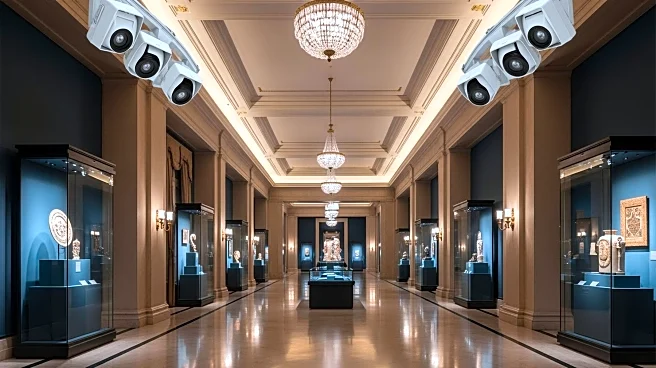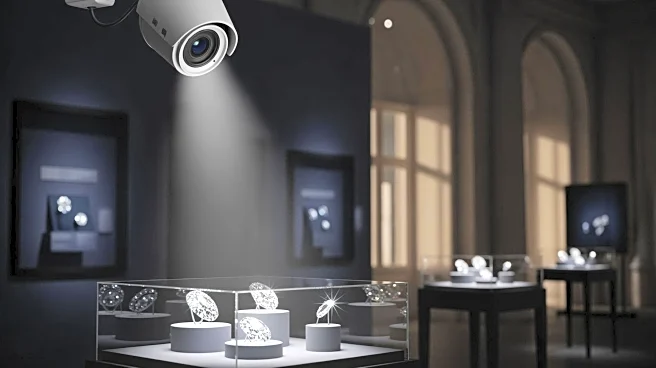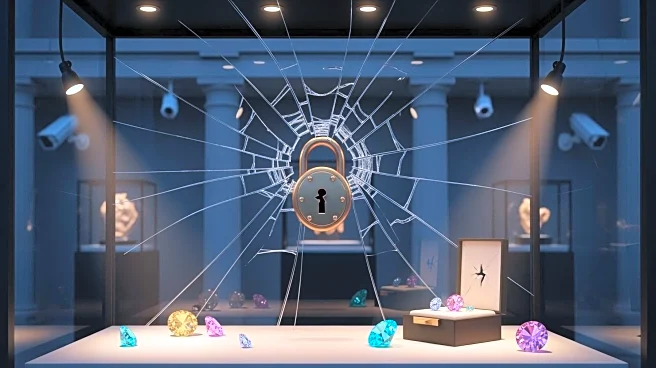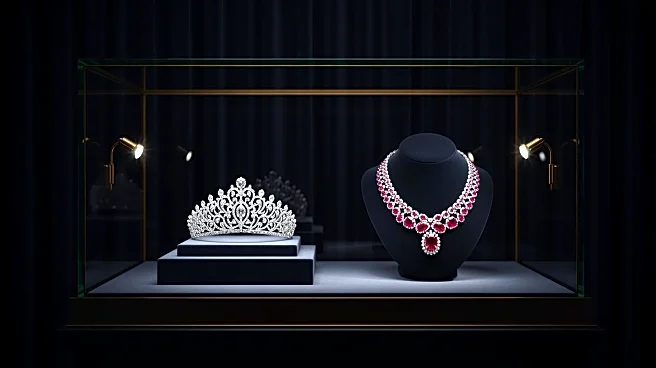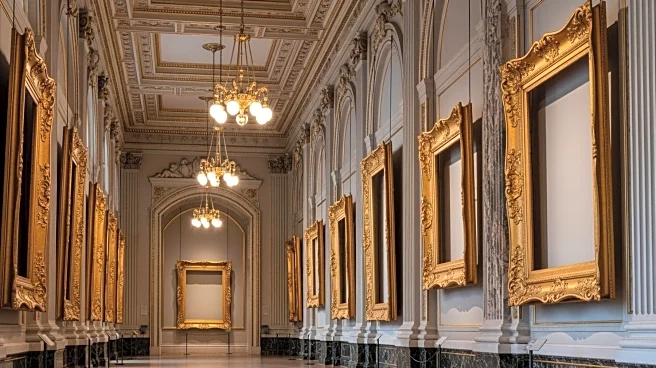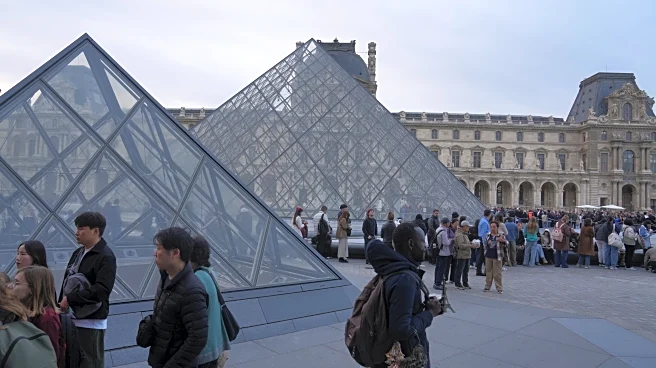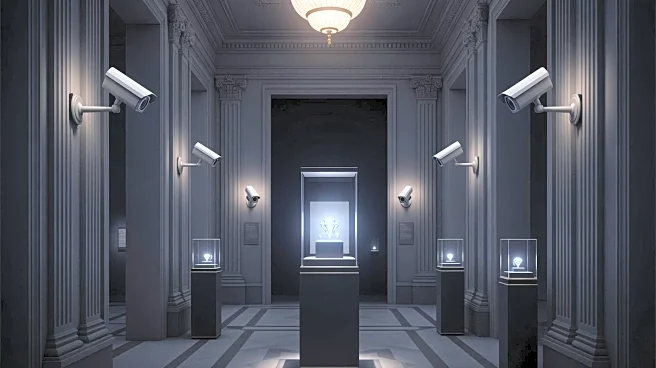What's Happening?
The Louvre Museum in Paris experienced a significant security breach when four masked thieves stole jewels worth approximately €88 million ($102 million) from the Apollo Gallery. The heist occurred on October
19, shortly after the museum opened, with the thieves using power tools and a mechanized ladder to access the gallery. They targeted two high-security display cases, stealing eight priceless heritage objects, including the crown of Empress Eugénie, which was later recovered near the scene. The theft has raised questions about the museum's security protocols, especially as the Louvre is undergoing a multimillion-dollar renovation project. Experts suggest that the thieves may have had inside information, allowing them to execute the heist swiftly and efficiently.
Why It's Important?
This incident highlights vulnerabilities in museum security, particularly during renovation periods. The theft of high-value items from a globally renowned institution like the Louvre underscores the need for enhanced security measures. The heist could lead to increased scrutiny and pressure on museums worldwide to reassess their security protocols, especially for valuable collections. The event also raises concerns about the potential for similar crimes, as professional gangs may target museums with perceived security weaknesses. The broader impact may include heightened security costs and changes in how museums display and protect their collections.
What's Next?
In response to the heist, the Louvre is implementing a new security master plan as part of its ongoing renovation project. This includes upgrading surveillance systems and perimeter detection to prevent future incidents. The museum community may also see increased collaboration with security experts to develop more robust protective measures. Additionally, law enforcement agencies are likely to intensify efforts to track down the perpetrators and recover the stolen items. The incident may prompt other museums to review their security strategies, particularly during periods of construction or renovation.
Beyond the Headlines
The theft raises ethical and legal questions about the protection of cultural heritage. As museums house irreplaceable artifacts, the loss of such items can have profound cultural implications. The incident also highlights the challenges of balancing public access to art with the need for security. Long-term, museums may need to consider innovative approaches to safeguarding their collections while maintaining public engagement. The heist serves as a reminder of the ongoing threat to cultural institutions and the importance of preserving historical artifacts for future generations.
